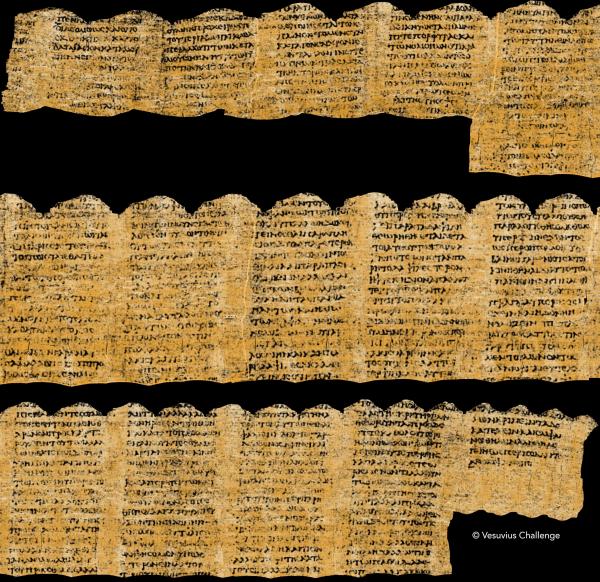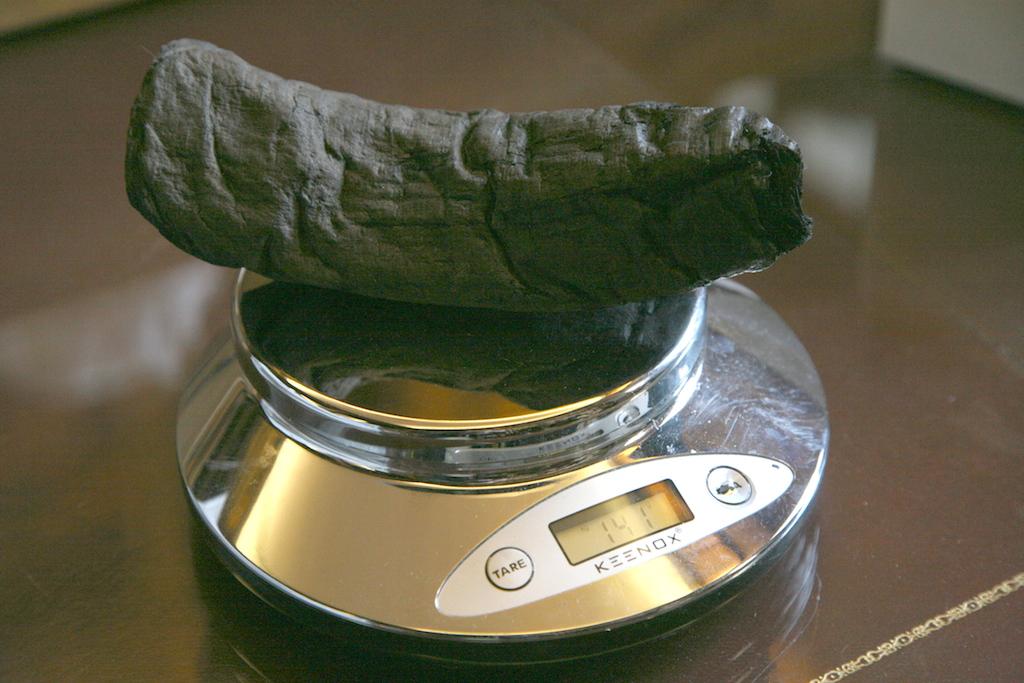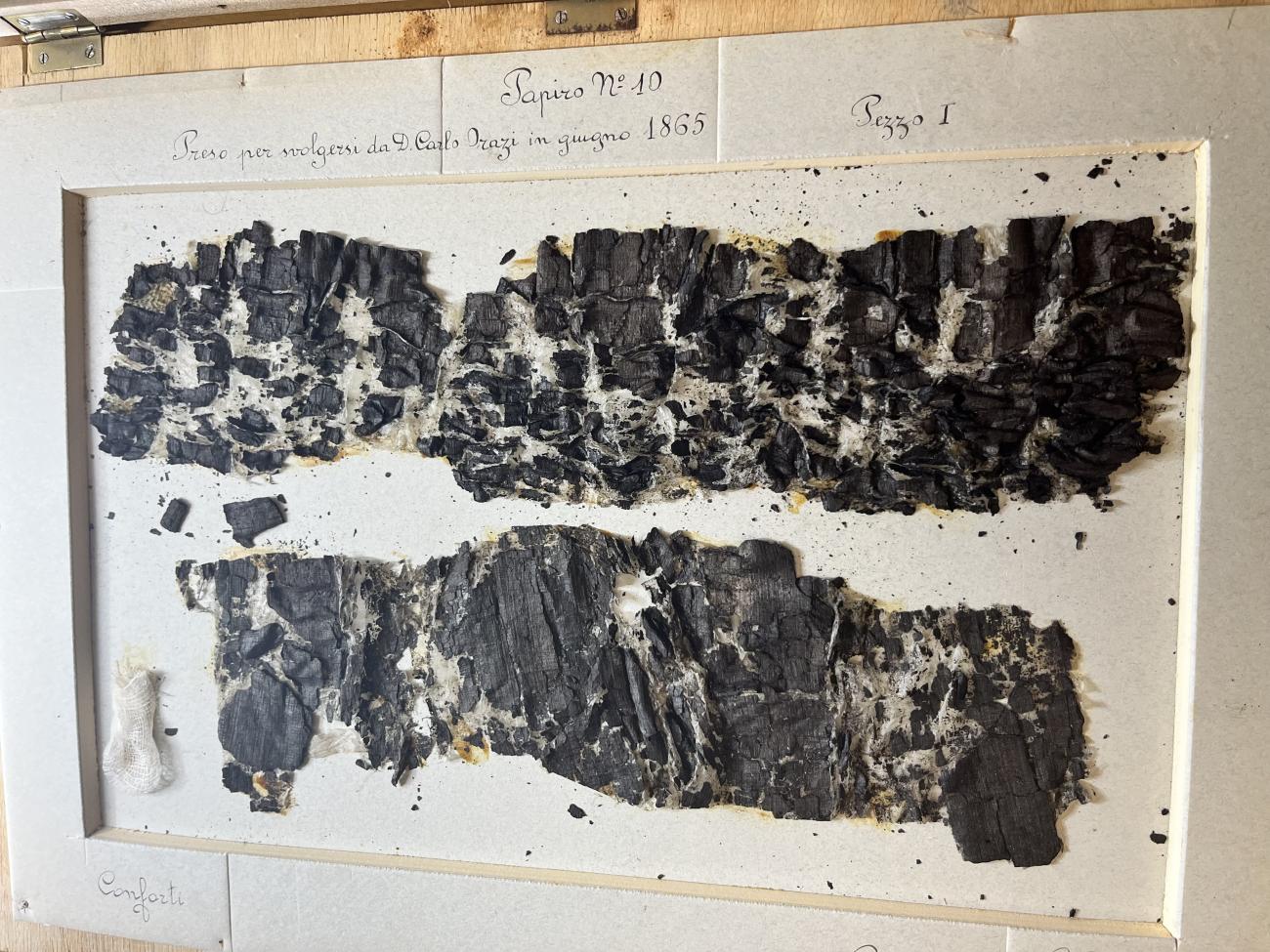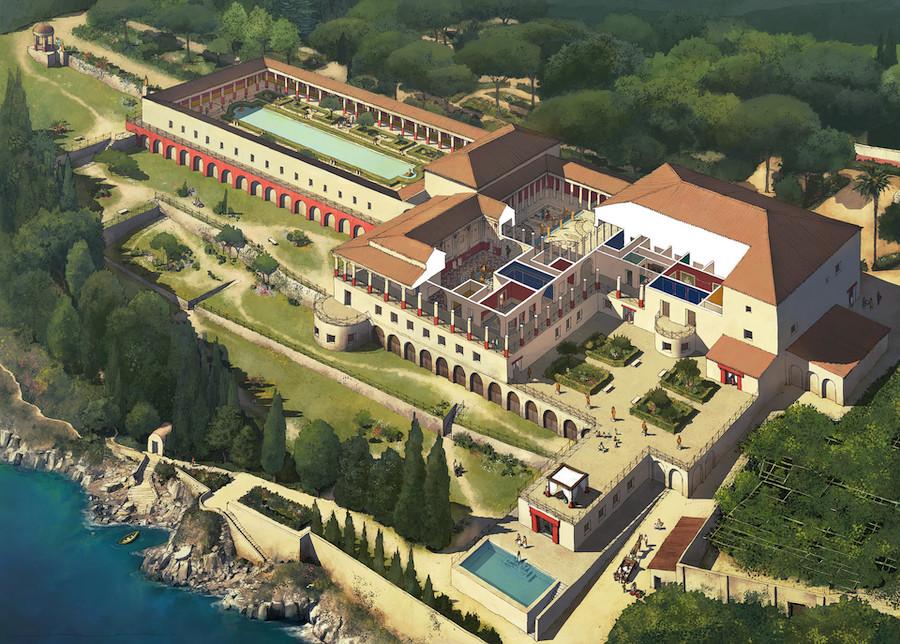Students Decipher 2,000-Year-Old Herculaneum Scrolls
NEH-supported AI technologies help crack one of archaeology’s most famous mysteries

Text from PHerc.Paris. 4 (Institut de France), unseen for 2,000 years.
© Vesuvius Challenge

Text from PHerc.Paris. 4 (Institut de France), unseen for 2,000 years.
© Vesuvius Challenge
Almost two millennia after the eruption of Mt. Vesuvius hardened them into lumps of coal in 79 CE, previously indecipherable papyrus scrolls from the ancient library of Herculaneum are finally yielding their secrets, thanks to artificial intelligence (AI) technologies created with support from the National Endowment for the Humanities (NEH).
The scrolls are from a cache of more than 1,800 charred and carbonized papyri discovered in 1752 at a villa in Herculaneum thought to have belonged to Julius Caesar’s father-in-law. Buried and protected by volcanic ash for thousands of years, the Herculaneum scrolls represent the only large-scale library from the classical world that has survived in its entirety. The papyri are known to contain significant philosophical and literary texts from ancient Greek and Roman scholars, but attempts to unroll them have invariably damaged or destroyed them, turning the coal-like relics to dust. For more than 270 years the remaining, intact papyri have been unreadable—making them one of the most tantalizing mysteries in archaeology.
This month organizers of the Vesuvius Challenge, a $1 million global competition to accelerate efforts to decode the Herculaneum papyri using artificial intelligence, announced that a trio of student researchers have developed machine-learning algorithms to successfully detect and decipher the first complete passages of text from scans of the charred scrolls.
This breakthrough follows more than 20 years of work by computer scientist Brent Seales—one of the cofounders of the Vesuvius Challenge—and a team of researchers at the University of Kentucky. They developed non-invasive technologies to access text locked deep within the compacted, carbonized layers of the Herculaneum papyri. In 2015, Seales and his team began testing their “virtual unwrapping” software—which uses computational methods to analyze and transform CT scans of layered objects into an unspooled, 3D image of its interior—first with the En-Gedi Scroll, an ancient parchment that Seales’s technology revealed to be the oldest Hebrew Bible scroll discovered after the Dead Sea Scrolls, and then with the Herculaneum papyri.
One aspect of the Herculaneum papyri made the unwrapping effort more challenging than previous projects: the difficulty of distinguishing the scrolls’ black, carbon-based ink from the carbonized papyrus. With a $500,000 grant from NEH in 2019 the team was able to develop and test machine-learning methods for detecting ink on the 3D x-ray scans of the scrolls, finally making it possible to map and identify letters, then words, and now whole passages from the papyri. An additional NEH Infrastructure and Capacity Building grant also supported the creation of EduceLab, the one-of-a-kind imaging and analysis laboratory at the University of Kentucky focused on developing solutions to the most challenging problems in the study of fragile cultural heritage such as the Herculaneum papyri.
In March 2023, Seales’s team released this software and thousands of 3D x-ray images of the Herculaneum scrolls to the public, partnering with Silicon Valley entrepreneurs Nat Friedman and Daniel Gross to launch the Vesuvius Challenge. Since then, researchers across the globe have been training AI algorithms in the scramble to decode the scrolls’ contents.
“The funding we received from NEH was an absolutely crucial step without which the Vesuvius Challenge never would have been possible,” says Seales. “What we were able to achieve with the funding, thanks to the investment of the NEH and their belief in our vision, was to formulate the scientific framework and the systematic experimentation that led directly to the methods we used in the Vesuvius Challenge. In fact, the contestants used our software, our examples, and the knowledge we gained from the NEH scope of work as the starting point for all the competitive development that followed.”
This February, three students were named the winners of the challenge’s $700,000 grand prize for recovering four passages of text from the images. Youssef Nader, an Egyptian biorobotics graduate student in Berlin, led the winning team that included Luke Farritor, a SpaceX intern and college student at the University of Nebraska-Lincoln, and Julian Schilliger, a robotics student from Zurich. Farritor was also the winner of a previous Vesuvius Challenge “progress prize” for uncovering the first letters in the scroll images in October 2023, when he was able to identify the word porphyras, meaning “purple” in ancient Greek, on the papyrus.
The three decoded more than 2,000 characters of text, which papyrologists have translated to a discussion of the nature of pleasure, most likely part of a previously unknown work by Epicurean poet and philosopher Philodemus of Gadara. In the translated passages, the author considers whether the availability or scarcity of goods such as food affects our experience of pleasure—and critiques intellectual rivals who “have nothing to say about pleasure, either in general or in particular, when it is a question of definition.”
These newly discovered passages represent just 5 percent of one scroll. But for Seales and his colleagues, the findings show that what was once thought impossible is now within reach. On the heels of this latest breakthrough, the founders of the Vesuvius Challenge have announced their goal for phase 2: to read 90 percent of the four fully scanned scrolls within the next year.
Scholars refer to hundreds of thousands of text-based heritage materials in libraries and museums across the globe that, like the Herculaneum scrolls, are too fragile or damaged to read and study, as part of an “invisible library” of knowledge that could significantly enhance and alter our understanding of world history and culture. Seales believes that the methods developed at University of Kentucky and through the Vesuvius Challenge will make possible reading the entirety of the Herculaneum scrolls—potentially the largest discovery from the ancient world to date—and pave the way for unlocking the knowledge held within other similarly damaged and fragile cultural artifacts worldwide.
“We are so grateful for the NEH's investment and their encouragement of our creativity and passion,” says Seales. “The leadership there could see, long before a contest was even possible, that we were knocking on the door of revelation and breakthrough. I know our project is not the only one in the NEH portfolio that seeks visionary outcomes, and we are proud to be recipients—and partners—with the national treasure and brain trust that the NEH represents and nurtures.”
Learn more about the Herculaneum scrolls and the Vesuvius Challenge at Nature, TIME, Popular Science, The Guardian, CNN, Wall Street Journal, and Hyperallergic.
NEH is also supporting production of a forthcoming documentary—tentatively titled “Herculaneum: Reading the Invisible”—that chronicles the work of the University of Kentucky’s Digital Restoration Initiative team as they attempt to digitally preserve and decipher the 2,000-year-old Herculaneum papyri.





